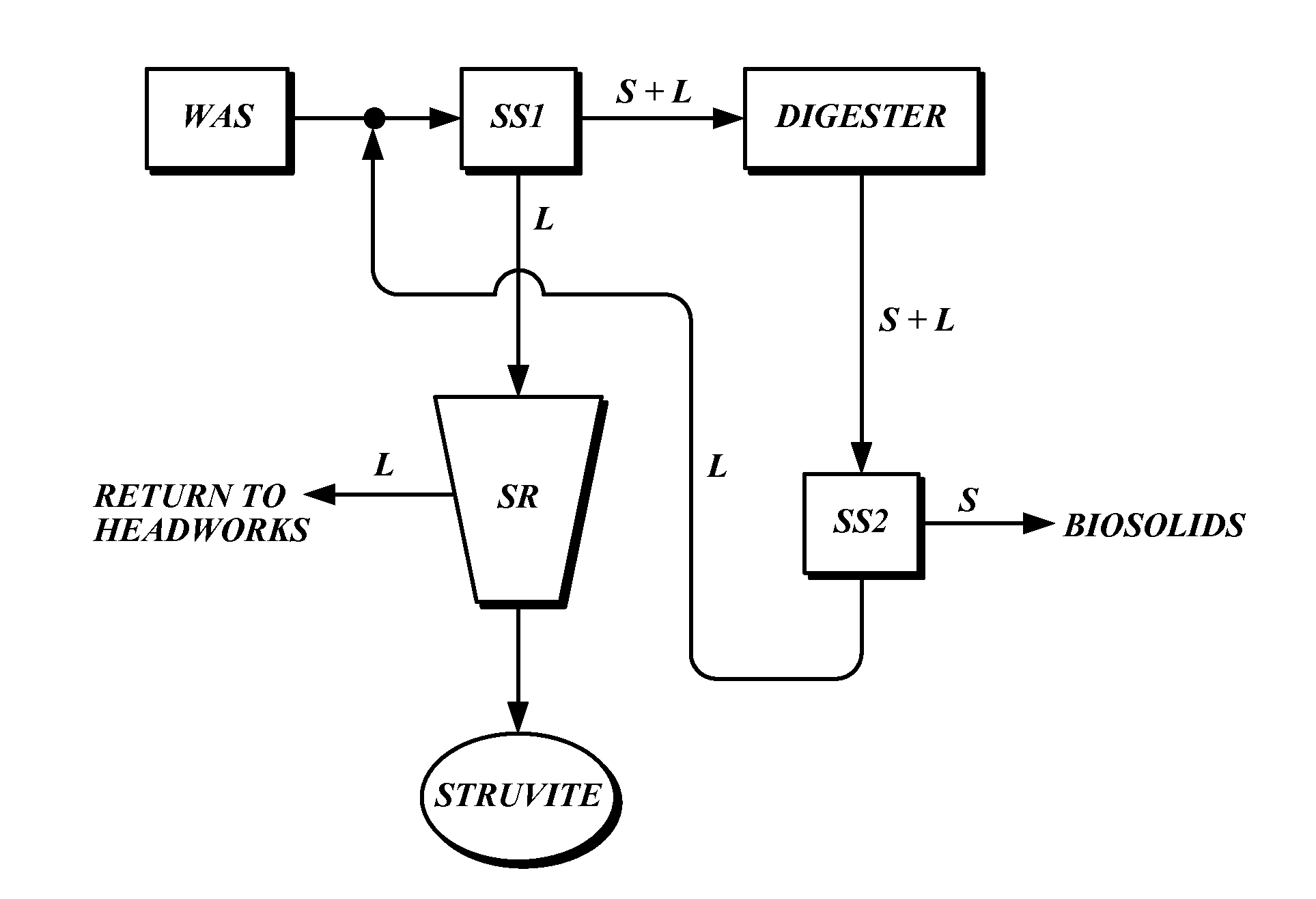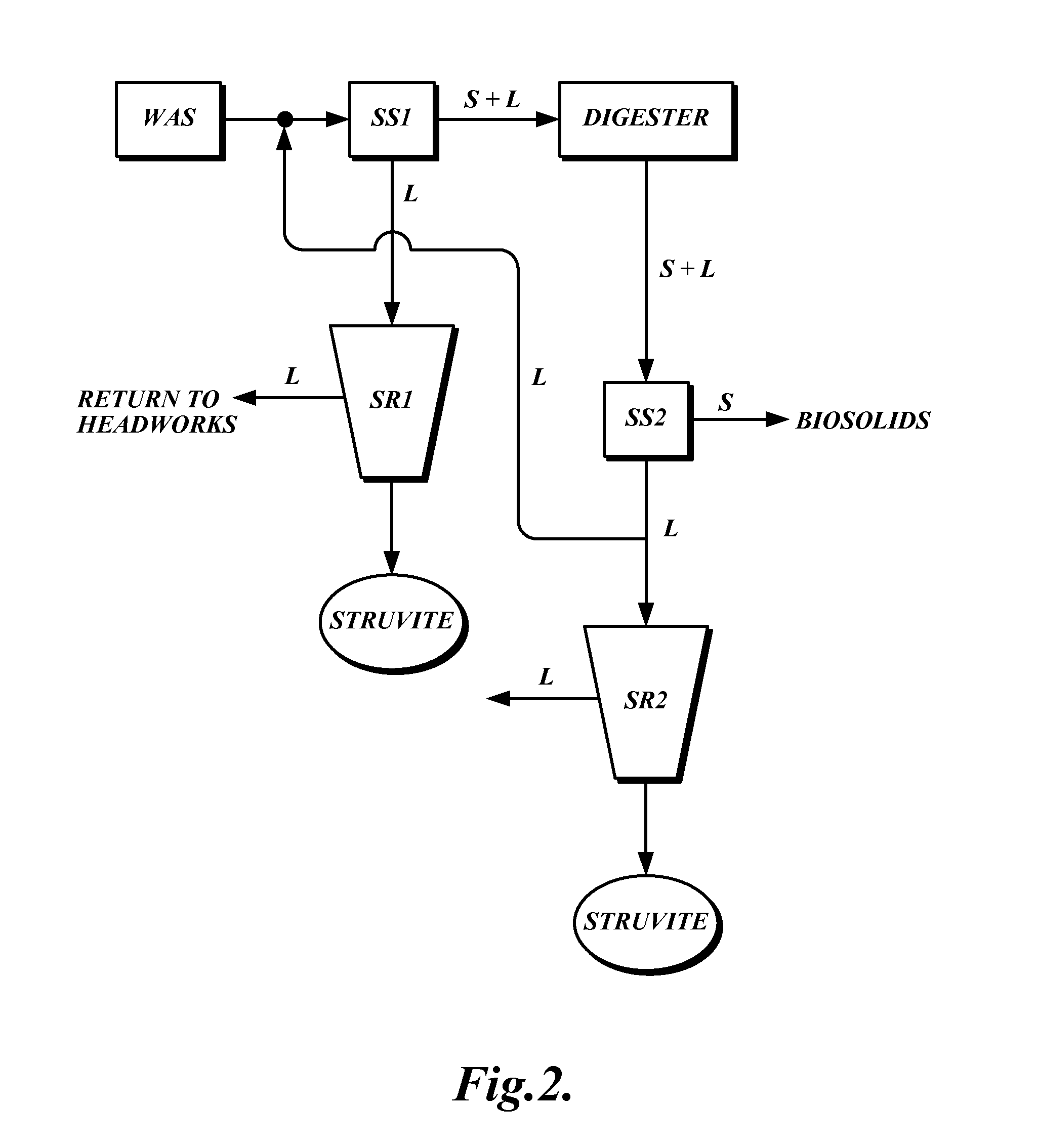Methods and systems for recovering phosphorus from wastewater including digestate recycle
a technology of digestate and wastewater, which is applied in the direction of phosphorus oxyacids, specific use bioreactors/fermenters, and after-treatment of biomass, etc., can solve the problems of current demand and exploitation, inability to meet the needs of phosphorus recovery, and inability to recover phosphorus from wastewater
- Summary
- Abstract
- Description
- Claims
- Application Information
AI Technical Summary
Benefits of technology
Problems solved by technology
Method used
Image
Examples
second embodiment
[0112]the invention is illustrated schematically in FIG. 2. Referring to FIG. 2, a mixture of microorganisms containing phosphorus and magnesium are induced to release phosphorus and magnesium into liquid to provide a treated mixture that includes phosphorus and magnesium (waste-activated sludge, WAS). The treated mixture is combined with a portion of the ammonia-rich, phosphorus- and magnesium-reduced liquid that is separated from the product of anaerobic digestion described below, and the combination subjected to solids separation (SS1) to provide a phosphorus- and magnesium-reduced mixture and an ammonia-containing, phosphorus- and magnesium-rich liquid.
[0113]The phosphorus- and magnesium-reduced mixture is subjected to anaerobic digestion, where ammonia is released, to provide an ammonia-rich, phosphorus- and magnesium-reduced mixture containing suspended solids in liquid (S+L). At this point substantially no combination of phosphorus and magnesium occurs because of the relative...
third embodiment
[0126]the invention is illustrated schematically in FIG. 3. Referring to FIG. 3, a mixture of microorganisms containing phosphorus and magnesium are induced to release phosphorus and magnesium into liquid to provide a treated mixture that includes phosphorus and magnesium (waste-activated sludge, WAS). The treated mixture and a portion of the ammonia-rich, phosphorus- and magnesium-reduced mixture, which is the product of anaerobic digestion described below, is subjected to solids separation (SS1) to provide a phosphorus- and magnesium-reduced mixture and an ammonia-containing, phosphorus- and magnesium-rich liquid.
[0127]In this embodiment, it is appreciated that the amount of ammonia necessary for inorganic phosphorus formation in the inorganic phosphorus reactor (SR1) may be less than the amount of ammonia present in the ammonia-rich, phosphorus- and magnesium-reduced mixture produced from the digester. Accordingly, in this embodiment, a portion of the ammonia-rich, phosphorus- an...
PUM
 Login to View More
Login to View More Abstract
Description
Claims
Application Information
 Login to View More
Login to View More - R&D
- Intellectual Property
- Life Sciences
- Materials
- Tech Scout
- Unparalleled Data Quality
- Higher Quality Content
- 60% Fewer Hallucinations
Browse by: Latest US Patents, China's latest patents, Technical Efficacy Thesaurus, Application Domain, Technology Topic, Popular Technical Reports.
© 2025 PatSnap. All rights reserved.Legal|Privacy policy|Modern Slavery Act Transparency Statement|Sitemap|About US| Contact US: help@patsnap.com



